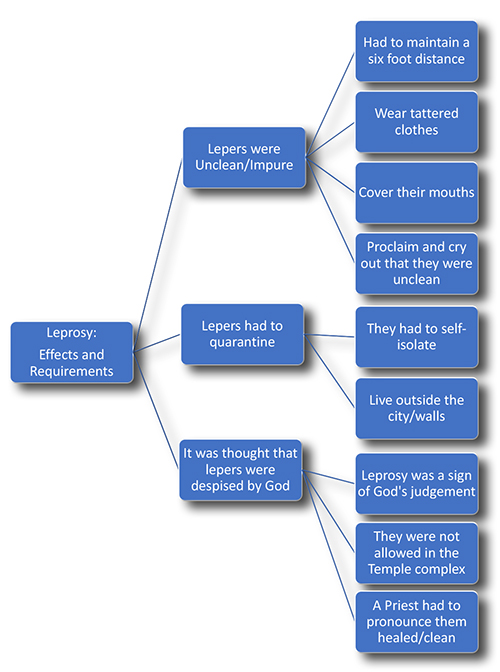The Leper’s Protocol
By Doug Greenwold
Excerpted from “Encounters with Jesus”
Lepers not only were condemned sinners but were also required to loudly declare themselves “unclean, unclean” whenever non-lepers were nearby. This was to avoid any inadvertent contact since this disease was assumed to be communicable by contact. As part of this contamination concern, there was a six-foot prohibition, more if the wind was blowing toward you, which meant that if any non-leprous person got within six (plus) feet of a leper (depending on the winds), they were considered to be ritually impure. That would mandate the non-leprous person having to go to the purification baths to be “cleansed.” Obviously, no one in his or her right mind would ever deliberately touch a leper.
Lepers were also forbidden from going to the Temple. In this culture by not going to the Temple and participating in the required sacrifices and offerings there, one could not become “right with God.” Thus, a leper could never get right with God and, as a result, had no hope. What must it have been like for a leper to walk around every day feeling in his soul that God does not like him and, furthermore, being convinced there was nothing he could do about it? He was considered to be the “living dead” in the eyes of this merciless and condemning religious culture and thus was expected to exhibit the countenance of a mourner.
The humiliation of being a leper never ended. The religious system of Jesus’ day also mandated that a leper could never wash his or her face (another constant reminder that you are always unclean). Furthermore, a leper was required to always hold a cloth under his or her nose to cover the bottom part of the face. The painful reality was that lepers were abandoned, anonymous, faceless people condemned to live under perpetual rejection by a heartless religious culture. The tragedy of this religious reality was that it was being done to honor God! Another reason Jesus had to come!

©The Rev. Robbie Pruitt, October 14, 2021, Executive Director, Preserving Bible Times



